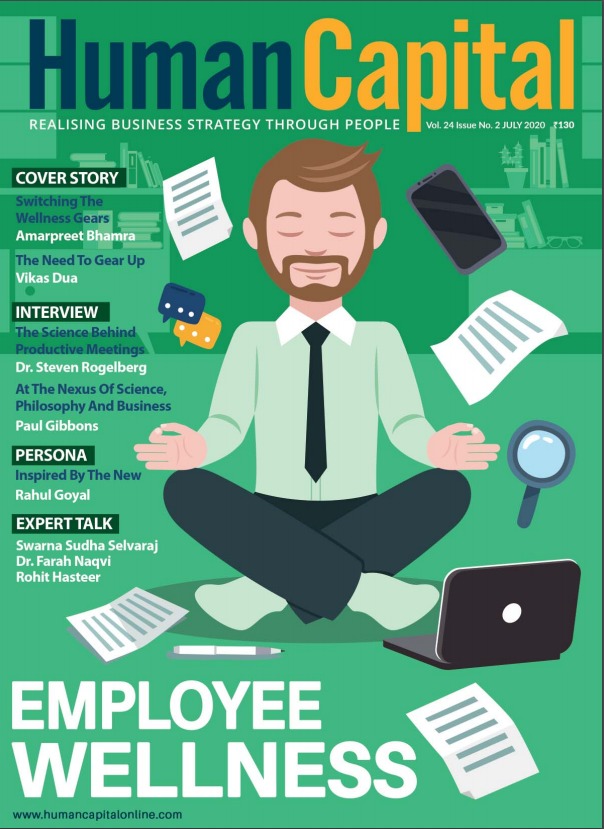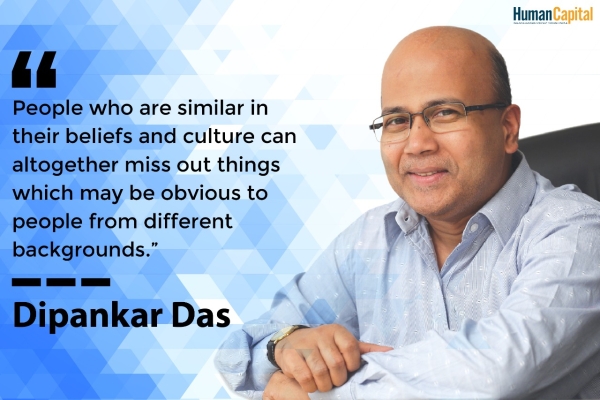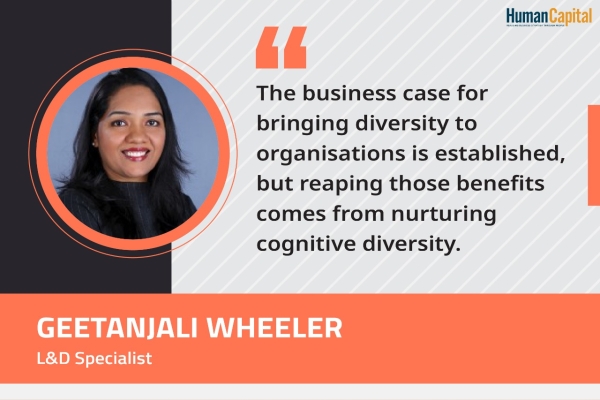The end of one year and the beginning of another is traditionally a time for fresh resolutions. Many make personal commitments to ensure better health, learning, career progression and work-life balance, among other things. This involves reflecting on whatever transpired in the last year and evaluating what went well or otherwise. Sometimes, it helps to broaden the scope of this exercise to include developments that may not have touched one personally, but may have been experienced by others, especially in one’s own profession and industry. People managers making plans for the new year ahead would do well to add three themes to their set for reflection.
To start with, the #metoo movement needs no introduction. A large number of men in senior positions in government, politics, business, journalism, broadcasting and the performing arts have had to face the consequences of inappropriate conduct. Several such people either lost their jobs or suffered other forms of career disruptions. This wave is unlikely to recede and can only grow as more and more victims pick up the courage to call out offenders. Any person heading HR should be prepared to handle complaints of such nature. Progressive managers have already set up mechanisms for reporting and processing such complaints, especially in large organisations. Some of these mechanisms already mandate involvement of not just insiders, but also external advisors of both genders. However, when one talks to senior managers, the common feeling can be summed up in the statement, “We have set up the committees and defined the processes but hope to God we do not have to use them”.
When large organisations, with a mixed gender workforce, report no cases of harassment, one wonders whether utopia has indeed been established, or, whether the mechanisms are not robust in capturing and processing incidents. There is an enormous impact to the brand and business of any organisation from incidents that are not processed correctly and eventually become public. Proactive steps are required for creating awareness of what constitutes harassment, how it should be reported, and, the dire consequences for the offender. The acid test for checking the efficacy of such mechanisms is in how they handle anonymous complaints and complaints against C‑Suite executives. In case after case that has eventually gone public, one finds that internal committees have ignored repeated complaints and have shielded senior executives by transferring or sacking the complainant. HR heads should evaluate their processes by thinking through how these will play out in the case of complaints against the chief executive, especially serious repeated anonymous complaints. If such cases become public, it is not just the offender who pays a price, but also the senior HR person who handled the case. Merely hoping that one will not have to handle such cases is not a prudent strategy. Since most incidents of such a nature happen without witnesses, and since the hierarchical gap is often large between the two parties involved, judiciousness is warranted in defining how truth will be established, and, in specifying the degree of confidence that has to be established before action. Proper documentation trails of the investigation have to be created at all times, and, will be called for, if the complainant reports the matter to authorities outside the company. This is a tough task, but has to be done.
The second theme for reflection relates to that part of the workforce that is not on the rolls. In many organisations, an increasing share of the work is being done by temporary, part-time, contractual staff and staff that are on the rolls of some service vendor. In some organisations, the traditional on-roll employees are even outnumbered by such a workforce. This trend shows no signs of abating. Much of the evidence is admittedly anecdotal as companies are reluctant to report that they actually regularly employ many more people than shown on their rolls. What should be done to get effective contribution from teams where only some members are on the rolls and get all the benefits of training, designation, promotion, compensation and benefits? How does one ensure continuity and engagement from those who are not regular employees? The traditional approach of managing this has been to confine non-regular employees to only some sub-functions, but those areas are also important for business success and require trained, productive, and, engaged staff. The challenge is complicated by internal budgeting processes that make training and staff-development provisions only for regular on-rolls staff. It could be argued that in a country with widespread unemployment, not much is required to get people to accept discriminatory treatment in the workplace. Perhaps so, but, it is also true that appropriately skilled, experienced and enthusiastic staff is always scarce and needs nurturing. Some HR managers seem to be relieved that they have to focus on development needs of only the on-rolls staff. That may prove to be a short-sighted approach.
The third theme for reflection relates to the special role of HR managers. A couple of decades ago, it was common for HR heads to be chided by other members of the C-suite for evaluating all policies from an employee perspective. They were told that they were taking a narrow functional view and should align their thinking with business objectives. Since then there has been a lot of talk around this alignment and many HR heads now pride themselves on firm alignment with business goals. They vigorously champion cost control and efficiency improvements like downsizing, outsourcing, automation, and de‑levelling in all parts of the organisation including HR itself. It is possible that this has gone too far and somebody has to once again carry the voice of the employees in the organisation. HR heads have to not merely align themselves to business, they have to also humanise business and sell the long-term value of that new alignment.
A recent set of papers from a conservative US think tank, known for its pro-market leanings, has surprised many people. To put it simply, the author, Oren Cass, of the Manhattan Institute of Policy Research, who has since followed up with a book “The Once and Future Worker”, states that the relentless focus on consumption-based GDP growth, as a measure of economic progress, is lopsided. People need steady jobs to bring meaning to their lives, to build enduring communities, and, to build a culture that supports business in the longer run. This could be dismissed as woolly talk if it came from a left-leaning academic. Coming from a firmly pro-business right-of-the-road thinker this is significant. Employee well-being and job stability has to be championed within businesses for long term economic growth. This is easier said than done and requires fresh ideas.
All aspects of the employment experience need attention. For instance, driven by cost savings, while packaging it as cheerful collegial collaboration, most companies have packed employees into open-plan offices, irrespective of the nature of their work. Over time, the space per person has only shrunk causing stress and disruption. This link has been known for a long time. As far back as in 1987, Tom Demarco and Timothy Lister determined that the productivity of knowledge workers in IT increased in proportion to their workspace area and was best in quiet closed-door offices. Now that all work is tending to be knowledge work that finding remains relevant. In a lighter vein, the comedienne JiJi Lee has written in the New York Times, lamenting that the open office plan provides no place for employees to cry privately. She suggests various options! The rest room is the final option because it has long lines. There is a dark edge to the piece. Why is the workplace so stressful? Why do employees cry at work? And, should we bother at all if they do? This was just an example and seating is not the only, or, even the most important, concern of employees at work. Determining those concerns and balancing them against business goals is a strategic contribution that only responsible HR heads can make. If they do not do it who will? Here is hoping that the coming of the new year will inspire fruitful reflection and useful resolutions with happy outcomes for all.
References
1. “The Once and Future Worker: A Vision for the Renewal of Work for America”; Oren Cass; Encounter Books; 2018
2. “Peopleware” (3rd Edition); T. Demarco & T. Lister; Addison Wesley; 2013
3. “Where to Cry in an Open Office?”; JiJi Lee; Sunday Review/ New York Times; Nov 9, 2018
Does your organisation support you in maintaining work-life boundaries?
Trending
-
SBI General Insurance Launches Digital Health Campaign
-
CredR Rolls Out 'Life Happens' Leave For Its Employees
-
Meesho Announces 30-Week Gender-Neutral Parental Leave Policy
-
Microsoft Unveils Tech Resilience Curriculum To Foster An Inclusive Future
-
60% Indian Professionals Looking For Job Change Due To COVID: Survey
-
SpringPeople And Siemens Collaborate For Digital Transformation Push
-
86% Professionals Believe Hybrid Work Is Essential For Work Life Balance: Report
-
Almost 1 In Every 3 People's Personal Life Affected Due To Work Stress
-
Meesho Rolls Out Reset And Recharge Policy For Employees
-
80% Of Talent Leaders & Academics Say Pandemic Changed Skill Needs For Youth: Report
-
Hero Electric Rolls Out 'Hero Care' Program For Employees
-
Human Capital In Collaboration With ASSOCHAM Hosts Virtual Conference
-
IKEA India, Tata STRIVE Collaborate To Create Employability And Entrepreneurship Opportunities
-
SAP India, Microsoft Launch Tech Skilling Program for Young Women
-
DXC Technology, NASSCOM Collaborate For Employability Skills Program
-
Lenskart To Hire Over 2000 Employees Across India By 2022
-
Mindtree Launches Learn-and-Earn Program
-
Tata AIA Extends 'Raksha Ka Teeka' To Its Employees
-
Swadesh Behera Is The New CPO Of Titan
-
NetConnect Global Plans To Recruit 5000 Tech Professionals In India
-
Hubhopper Plans To Hire 60% Of Indian Podcasters By 2022
-
Corporate India Needs More Women In Leadership Roles: Report
-
Aon to Invest $30 Million and Create 10,000 Apprenticeships by 2030
-
Tech Mahindra Launches ‘Gift a Career’ Initiative for Upskilling of Youth
-
40% Women Prefer Flexible Working Options in Post-COVID World: Survey
-
3 out of 4 companies believe they can effectively hire employees virtually: Report
-
Vodafone , CGI and NASSCOM Foundation launch digital skills platform
-
Odisha: Bank, postal employees to deliver cash for elderly, differently-abled persons
-
Skill India launches AI-based digital platform for "Skilled Workforce"
-
Hiring activity declines 6.73% in first quarter: Survey
-
70% startups impacted by COVID-19 pandemic
-
Bajaj Allianz Life ropes in Santanu Banerjee as CHRO
-
Over 70 Percent MSMEs look at cutting jobs to sustain businesses
-
93 Per Cent employees stressed about returning to office post-lockdown
-
Johnson & Johnson India announces family benefits for same gender partners
-
Indian firms turning friendly towards working mothers
-
Welspun India names Rajendra Mehta as new CHRO
-
Wipro partners with NASSCOM to launch Future Skills platform



Human Capital is niche media organisation for HR and Corporate. Our aim is to create an outstanding user experience for all our clients, readers, employers and employees through inspiring, industry-leading content pieces in the form of case studies, analysis, expert reports, authored articles and blogs. We cover topics such as talent acquisition, learning and development, diversity and inclusion, leadership, compensation, recruitment and many more.
Subscribe Now












































Comment